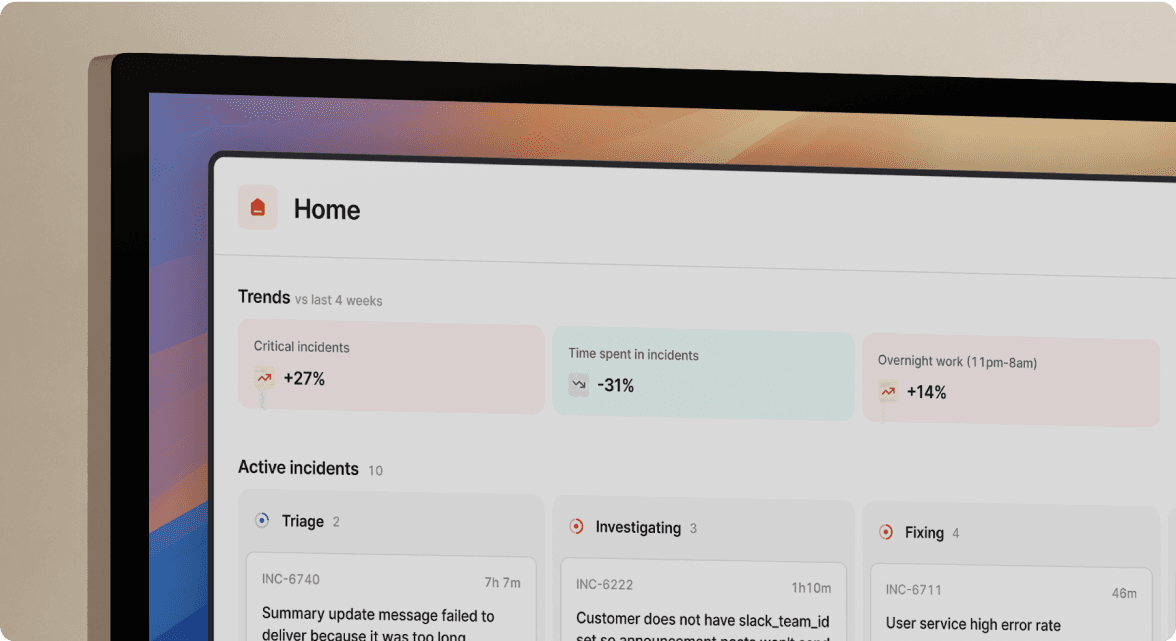Sync follow-ups created during the post-mortem
August 6, 2024

Post-mortems, debriefs, incident reviews — whatever your team calls them — are a vital part of the incident process.
During these moments of reflection, action items are often created to help prevent this incident from occurring again. These items should be closely tracked to understand how your team has addressed any issues. Some of the challenges with this process were:
- The post-mortem and the incident would get quickly out of sync and there wouldn’t be a single source of truth for how an incident is being addressed.
- It was time-consuming to track follow-ups created after exporting the post-mortem to the incident
We’ve streamlined this process and kept incident.io as the single source of truth for all activities around an incident by removing the pain associated with follow-ups created during the debrief.
💥 What’s new?
Starting with Confluence and Google Docs, we will now automatically attach any issue tracker links in a post-mortem document to its respective incident as a follow-up, making it easy to see all the changes suggested after an incident.
This means, regardless if a follow up action is identified during an incident, or during the debrief, you can find them all in one place on incident.io under the follow-ups section on an incident.

We’ve turned this on for everyone, but can be toggled in Settings → Post Mortems → Automatically sync follow-ups from post-mortems.
🚀 What else we’ve shipped
New
- We will now let you schedule overrides that happen before a schedule is due to start, to arrange ad-hoc cover.
- When you make changes to who is on a schedule or the order they are on, we will automatically calculate when these changes should come into effect so that the current on-caller finishes their shift first.
- You can now use the incident name and summary in your announcement rule logic
- BugSnag Alert Source
- Monte Carlo Data Alert Source
- Azure Monitor Alert Source
Bug fixes
- We’ve fixed an issue where MTTX graphs would only show monthly data
- We've fixed an issue where sometimes the continue button would fail to work when editing an alert source
- We've fixed an issue where we'd show you a 'time to acknowledge' working hours option that wasn't valid when editing an escalation path
- We’ve fixed an issue where component impacts were incorrectly showing on some customer status pages
- We’ve fixed an issue where the AI assistant overlay was incorrectly showing on mobile view
- We’ve fixed an issue where text would overflow in the escalations list
- We’ve fixed an issue that was preventing you create a new saved view
- We've prevented key fields such as Severity from being deleted from incident forms
Improvements
- We now default schedules to display from the beginning of the day or week depending on the time window you're viewing
- We’ve made improvements to status page accessibility on smaller displays
- We gave the pay calculator a lick of paint, making the layout more consistent with the rest of our app
- We've improved our matching of holiday to users within a schedule - Rippling HRIS is also now supported
- We've made it clearer which timezones you're looking at when viewing a schedule
- We’ll now surface if we can't use your Zoom integration because it's installed in multiple accounts
- We've improved performance when updating catalog-backed custom fields with many entries
So good, you’ll break things on purpose
Ready for modern incident management? Book a call with one of our experts today.

We’d love to talk to you about
- All-in-one incident management
- Our unmatched speed of deployment
- Why we’re loved by users and easily adopted
- How we work for the whole organization



